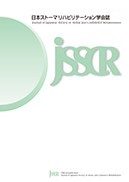Volume 12, Issue 2
Total28
Displaying 1-12 of 12 articles from this issue
- |<
- <
- 1
- >
- >|
-
1996Volume 12Issue 2 Pages 0
Published: 1996
Released on J-STAGE: October 31, 2023
Download PDF (899K)
-
1996Volume 12Issue 2 Pages 1-6
Published: 1996
Released on J-STAGE: October 31, 2023
Download PDF (3283K)
-
1996Volume 12Issue 2 Pages 7-13
Published: 1996
Released on J-STAGE: October 31, 2023
Download PDF (3364K) -
1996Volume 12Issue 2 Pages 15-20
Published: 1996
Released on J-STAGE: October 31, 2023
Download PDF (3393K)
-
1996Volume 12Issue 2 Pages 21-25
Published: 1996
Released on J-STAGE: October 31, 2023
Download PDF (3100K) -
1996Volume 12Issue 2 Pages 27-30
Published: 1996
Released on J-STAGE: October 31, 2023
Download PDF (1979K)
-
1996Volume 12Issue 2 Pages 31-41
Published: 1996
Released on J-STAGE: October 31, 2023
Download PDF (7682K)
-
1996Volume 12Issue 2 Pages 43-44
Published: 1996
Released on J-STAGE: October 31, 2023
Download PDF (1055K) -
1996Volume 12Issue 2 Pages 45-48
Published: 1996
Released on J-STAGE: October 31, 2023
Download PDF (2058K) -
1996Volume 12Issue 2 Pages 49-50
Published: 1996
Released on J-STAGE: October 31, 2023
Download PDF (966K) -
1996Volume 12Issue 2 Pages 51-58
Published: 1996
Released on J-STAGE: October 31, 2023
Download PDF (5149K) -
1996Volume 12Issue 2 Pages 59-63
Published: 1996
Released on J-STAGE: October 31, 2023
Download PDF (3082K)
- |<
- <
- 1
- >
- >|
